
Holsworthy military base is an Australian Army military barracks, located in the Heathcote National Park in Holsworthy approximately 25 km (16 mi) from the central business district, in south-western Sydney, New South Wales, Australia. The barracks is part of the Holsworthy military reserve, which is 22,000 ha (54,000-acre) training area and artillery range for the Australian Army, established in the 1880s and been in active use since World War I. Following World War II, it became a major base for the permanent component of the Australian Army in New South Wales. Holsworthy Military Airport is also located in the reserve. Activities carried out on the base include the use of firing ranges, chemical weapons testing, fire training, vehicle maintenance, and bulk chemical storage and distribution from numerous above ground and underground storage tanks.

The Australian Army Reserve is a collective name given to the reserve units of the Australian Army. Since the Federation of Australia in 1901, the reserve military force has been known by many names, including the Citizens Forces, the Citizen Military Forces, the Militia and, unofficially, the Australian Military Forces. In 1980, however, the current name—Australian Army Reserve—was officially adopted, and it now consists of a number of components based around the level of commitment and training obligation that its members are required to meet.

The 2nd Cavalry Regiment is an armoured cavalry regiment of the Australian Army. Formed in 1965 as the "1st Cavalry Regiment", it is the second most senior regiment in the Royal Australian Armoured Corps. In 1970, the regiment was redesignated as the "2nd Cavalry Regiment", to differentiate it from the 1st Armoured Regiment. The regiment was based at Holsworthy until 1992 when it was allocated to the 1st Brigade based in Darwin in the Northern Territory. In late 2014 the regiment was transferred to the 3rd Brigade, and is now based in Townsville in Queensland. The unit is equipped with M1A1 tanks, ASLAV light armoured vehicles and M113AS4 APCs.
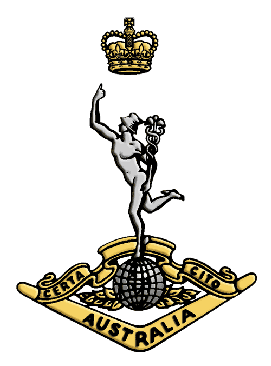
The Royal Australian Corps of Signals (RASigs) is one of the 'arms' of the Australian Army. It is responsible for installing, maintaining, and operating all types of telecommunications equipment and information systems. The motto of the Signals Corps is Certa Cito and is translated as 'Swift and Sure', signifying the aim of the signal service – that communication be carried out with maximum speed and certainty. Like their British counterparts, the Royal Australian Corps of Signals' flag and hat badge feature Mercury, the winged messenger of the gods, affectionately referred to by members of the corps as "Jimmy".
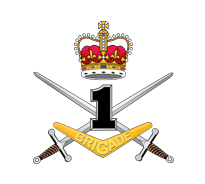
1st Brigade is a combined arms formation of the Australian Army. Formed in 1903 as a militia formation based in New South Wales, it was reconstituted as part of the Australian Imperial Force in 1914 for service during World War I, the brigade fought at Gallipoli and on the Western Front before being disbanded in mid-1919. In 1921, the 1st Brigade was re-raised as a unit of Australia's part-time military forces, based in New South Wales. During World War II the brigade undertook defensive duties before being disbanded. In 1948, it was re-raised as an integral part of the Australian Regular Army. Currently the brigade is based at Robertson Barracks in Darwin and at RAAF Base Edinburgh near Adelaide, South Australia. It is the first of the Australian Army brigades to be re-organised as a combat brigade under Plan Beersheba.

The 3rd Brigade is a combined arms brigade of the Australian Army, principally made up of the 1st and 3rd Battalions of the Royal Australian Regiment. Initially raised in 1903 as part of the post-Federation Australian Army, it was removed from the order of battle in 1906 following the restructure of the field force. It was re-formed in 1914 for service during World War I, taking part in the fighting at Gallipoli and on the Western Front in Europe. During World War II the brigade was used in a defensive role before it was disbanded in 1944. It was re-raised in 1967 for service during the Vietnam War and later went on to provide the nucleus of the deployment to East Timor during the Australian-led intervention in 1999. The brigade is currently based at Lavarack Barracks in Townsville, Queensland.
Enoggera Barracks is an Australian Army base in the northwestern Brisbane suburb of Enoggera in Queensland, Australia. It was officially established in the early 20th century when the area was used for field training, although the area was used by military units as far back as the mid-19th century. Since then it has been developed into a modern military base, which is now home to units of the 7th and 11th Brigades as well as the headquarters of the 1st Division and the 16th Aviation Brigade.
Lavarack Barracks is a major Australian Army base located in the suburb of Murray in the City of Townsville, Queensland, Australia. Lavarack Barracks is currently home to the Army's 3rd Brigade and 11th Brigade. Elements of the 3rd Brigade based at the Barracks include the Combat Signals Regiment, 3rd Combat Services Support Battalion, the 1st, 2nd and 3rd Battalions of the Royal Australian Regiment and the 2nd Cavalry Regiment. The barracks are named after Lieutenant General Sir John Lavarack, an Australian Army officer during both World Wars and Governor of Queensland from 1946 to 1957.

The 11th Security Force Assistance Brigade is a brigade of the British Army which is intended to train and assist foreign forces. In 2021, under the Future Army changes, the brigade was redesignated, formerly being the 11th Infantry Brigade & HQ South East. Prior to the Army 2020 changes in 2013, the brigade was temporarily activated for deployment to Afghanistan. Originally formed in the Second Boer War, the brigade was engaged during both World Wars.

The 9th Brigade is a Reserve formation of the Australian Army headquartered at Keswick Barracks in Keswick, South Australia, with elements located in New South Wales and South Australia. The brigade was first raised in 1912 in New South Wales following the introduction of the compulsory training scheme.
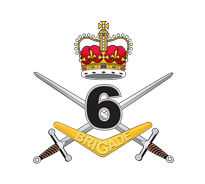
The 6th Combat Support Brigade is an Australian Army brigade. First formed in 1912 as a Militia formation to provide training under the compulsory training scheme, the brigade was re-raised during the First World War as an infantry unit of the all volunteer Australian Imperial Force. It subsequently served at Gallipoli and in France and Belgium on the Western Front. In the 1920s, as part of a reorganisation of the Australian Army, it became part of the 3rd Military District of the Citizens Military Force, encompassing units from Victoria and South Australia. In 1991, it became part of the Ready Reserve Scheme, based at Enoggera Barracks, in Brisbane, Queensland, before being disbanded in 1996 when the scheme was discontinued. The brigade was re-raised on 1 March 2010 to oversee the Army's command support and intelligence, surveillance, target acquisition and reconnaissance units.

The 2nd Health Brigade (2HB) is an Australian Army brigade. The 2nd Brigade was formed in 1903 as a militia infantry formation based in Victoria, the brigade later served during the First World War as part of the Australian Imperial Force, allocated to the 1st Division. During the war, the 2nd Brigade took part in the fighting at Gallipoli, including the Battle of Krithia where it lost almost a third of its strength. Later they took part in the Battle of Lone Pine before being withdrawn back to Egypt in December 1915. Following this the brigade was transferred to the Western Front in France and Belgium where, between March 1916 and the armistice in November 1918, they took part in most of the major Allied operations.
The 16th Aviation Brigade commands all the Australian Army aviation units and has technical control of the Army Aviation Training Centre reporting to Army Aviation Command. The Brigade was formed on 2 April 2002 by combining Headquarters Divisional Aviation and Headquarters Aviation Support Group and is headquartered in Enoggera Barracks, Queensland. It was originally named Headquarters 16th Brigade (Aviation) and was renamed to the 16th Aviation Brigade.

The 1st Brigade is currently the largest unit of the New Zealand Army, and contains most of the army's deployable units. The brigade was formed on 13 December 2011 by amalgamating the 2nd Land Force Group and 3rd Land Force Group. Its establishment formed part of the 'Army 2015' package of reforms.
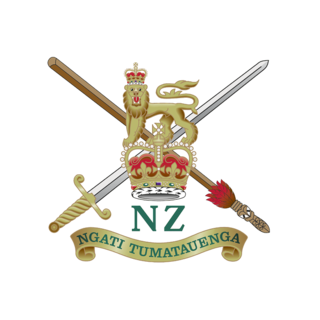
This article describes the current structure of the New Zealand Army. It includes the army's order of battle and the headquarters locations of major units.
The 6th Engineer Support Regiment is a specialised engineer regiment of the Australian Army. Established in early 2003, the regiment was formed by grouping several previously independent engineer squadrons – each providing different engineer support functions – together under a single headquarters. Headquartered at RAAF Base Amberley in Queensland, the regiment's sub-units are also based in Queensland.

Randwick Army Barracks is a military base in Sydney, Australia. It is the base for a number of support and Australian Army Reserve units.

The page contains the current structure of the British Army. The British Army is currently being reorganised to the Future Soldier structure.
The following is a hierarchical outline for the structure of the British Army in 1989. The most authoritative source for this type of information available is Ministry of Defence, Master Order of Battle, and United Kingdom Land Forces, HQ UKLF, UKLF ORBAT Review Action Plan, HQ UKLF, 1990.
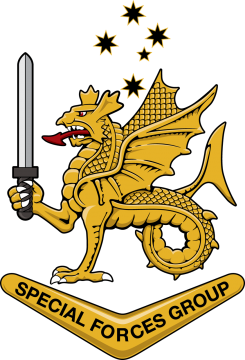
Special Forces Group (SFG) is an Australian Army formation command that forms part of the Special Operations Command (SOCOMD). The group is a brigade-level formation that commands all of the units assigned to Special Operations Command. The Special Forces Group reports to the Special Operations Command.


















